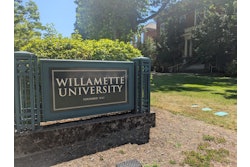
The credit rating agency's report, released Tuesday, points to several key factors driving the negative outlook, including cuts to research funding, enforcement actions against diversity programs, staff reductions at the U.S. Department of Education, uncertainty over federal student aid, and possible expanded taxes on endowments.
The report highlights the proposed 15% cap on National Institutes of Health (NIH) funding for indirect costs as particularly damaging to research universities. While temporarily stayed by a federal district court, the cap could result in more than $100 million per year in cuts for some of the largest R1 Research Institutions. Most R1 universities have negotiated indirect cost rates up to 60%, making the potential impact severe.
Universities with large academic medical centers that conduct medical research with NIH funding face heightened risks, according to the report. Many university hospitals rely heavily on Medicaid funding from state and federal governments and could face severe revenue shortfalls if federal Medicaid funding is cut.
Staff reductions at the Department of Education (ED) pose another significant threat. Layoffs on March 11 reduced the department's workforce by about half, which may lead to disruption in federal financial aid, civil-rights investigations, and other programs. The largest share of ED employees work in the federal student aid office, making any disruption potentially catastrophic for institutions that rely on revenue from student charges provided by federal student loans and Pell Grants.
"The credit-negative impact of even a temporary cessation in federal student loan origination or Pell Grant disbursement would be even greater, particularly for low-income students," the report warns. "Only a select group of wealthy institutions have the financial flexibility to manage such a scenario without likely seeing steep enrollment declines."
The report also addresses the potential expansion of the excise tax on university endowments, currently set at 1.4% on net investment income for private institutions with at least 500 students and wealth over $500,000 per full-time student. A substantial increase in the tax rate above 10% or a broadening of the base to more universities would place a far greater strain on financial reserve growth for many private universities.















